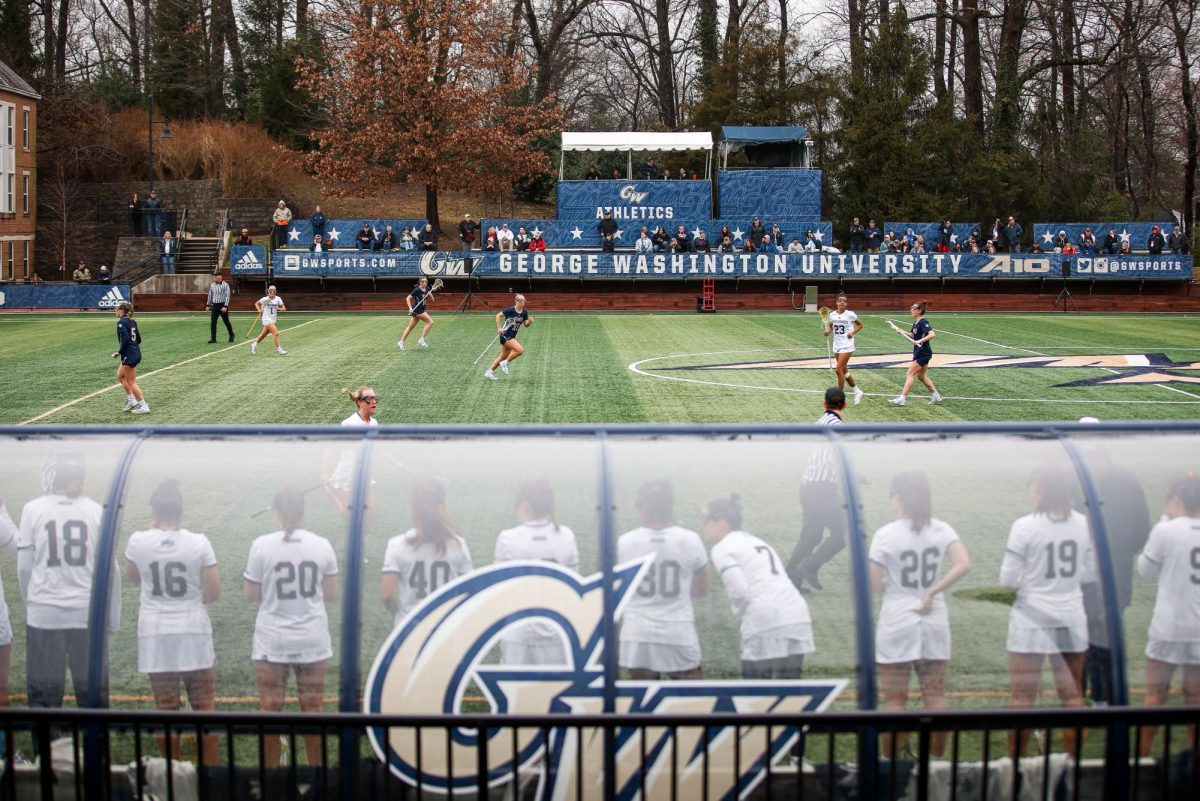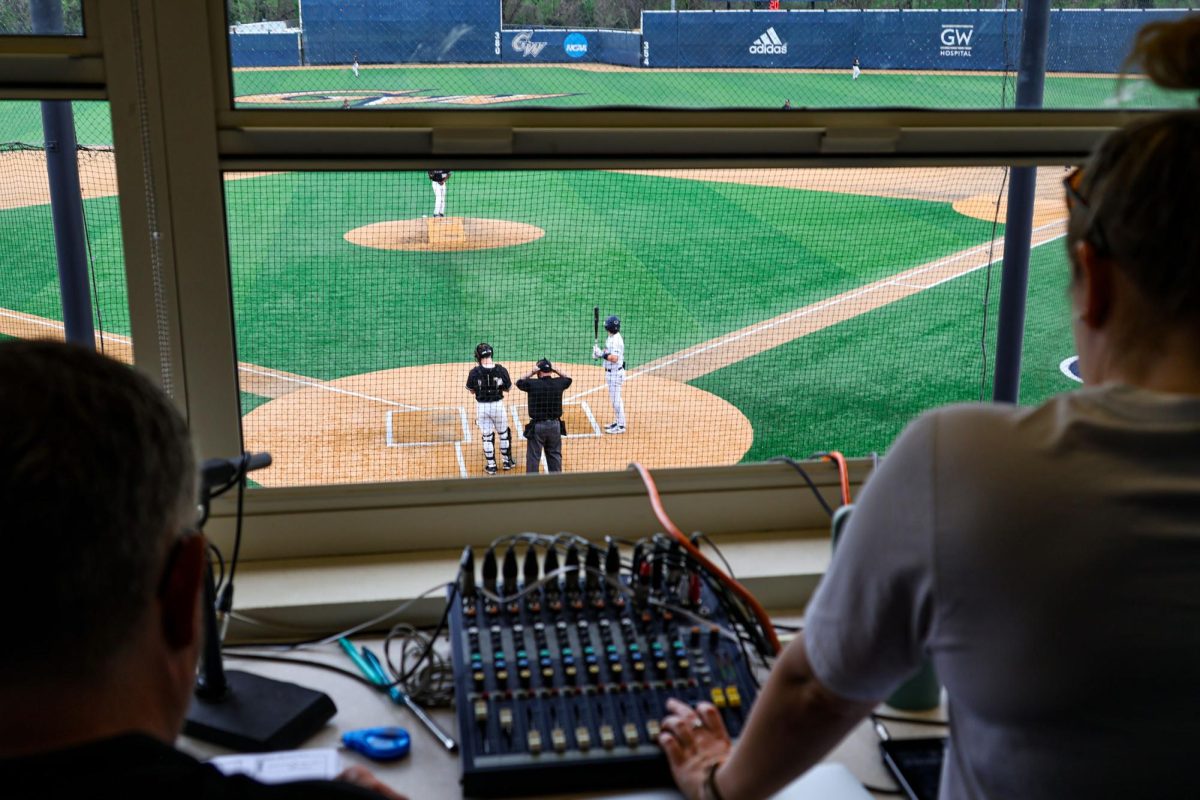Every time a rowing crew disembarked its long, slender boat and carried its shell to the Thompson Boathouse on the Potomac River, people got in the way. It is just what happens when you jam 13 crews, spectators and tourists into Washington Harbor on a Saturday afternoon in April.
And every time the crew had to ask someone to get out of the way, you heard the same words.
“Heads up!”
Not “watch out,” or “get out of the way.”
Instead, “heads up.”
Maybe it is because that is what has always been said. Or maybe that is just what rolls off the tongue quickest.
Either way, there might be no better metaphor for the sport itself: it is a tradition. And you’ve got to be fast.
The United States Naval Academy was the fastest of them all this weekend, taking home first place at the 21st annual GW Invitational Regatta with a score of 174 points. The Midshipmen received the Gilbert H. Hood Jr. point trophy for their winning efforts.
GW took fifth place in the overall competition with 103 points while taking fourth in the women’s category and fifth in the men’s. The University of Iowa and Syracuse University won the men’s and women’s categories, respectively.
“I think overall it was a pretty good weekend,” women’s crew coach Rob McCracken said. “One of the nice things about the race that we host is that it gives us three distinct racing opportunities. I feel like over the course of each of the three races, our boats worked on a lot of things and improved and got better. That will hopefully help us next weekend when we have our Atlantic 10 Championships.”
The invitational consists of multiple two- and three-boat races of a two-kilometer length. While other schools have set courses that can remain buoyed for long periods of time, the traffic and characteristics of the Potomac River do not afford the Colonials that opportunity.
Still, McCracken said the tradition of rowing on an open river and having to navigate objects in the water – in this case, the Francis Scott Key Bridge – is part of what makes the Potomac an excellent venue.
“It’s really neat when you look out in the Potomac and see the lane lines. I think it’s a really neat place to be able to race,” he said. “You’re coming down the course and going underneath the Key Bridge and there’s the Washington Monument poking up in the distance and the Kennedy Center.”
And with such prestigious landmarks lining the course and a plethora of polo shirts and topsiders clothing the spectators as they sip beverages from riverside bars, the event can seem rather elite. That is because that is how the sport used to be, McCracken said. Nowadays, McCracken said he thinks the sport is becoming more common.
“People often associated it with just the Ivy League and Great Britain, but I think it’s starting to go full circle and coming back to something where there are a lot more opportunities,” he said. “All over the country you see more and more high school programs growing, which helps feed to the collegiate level.”






